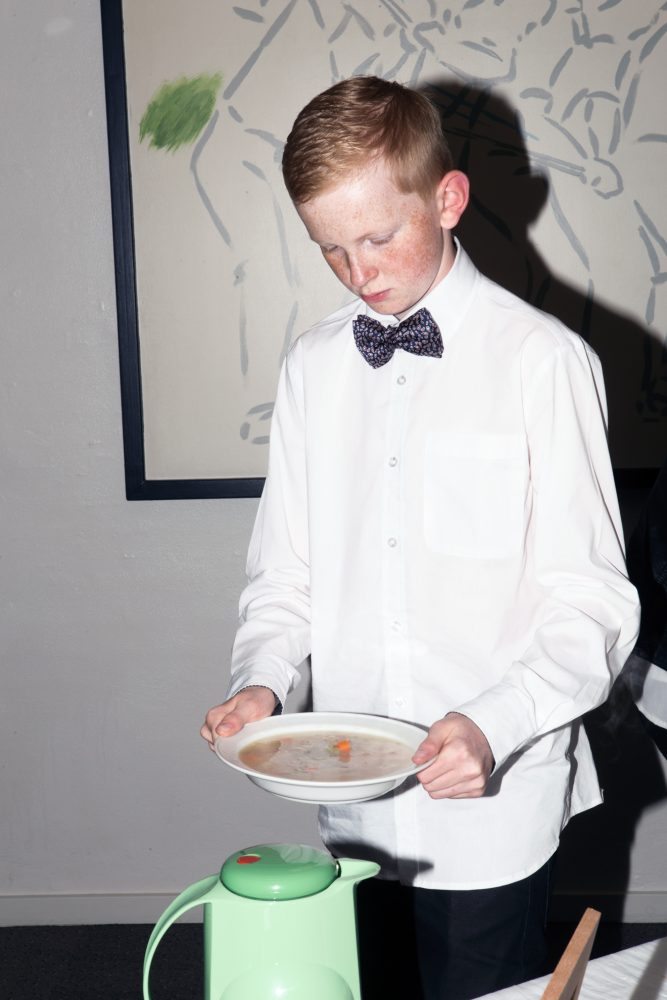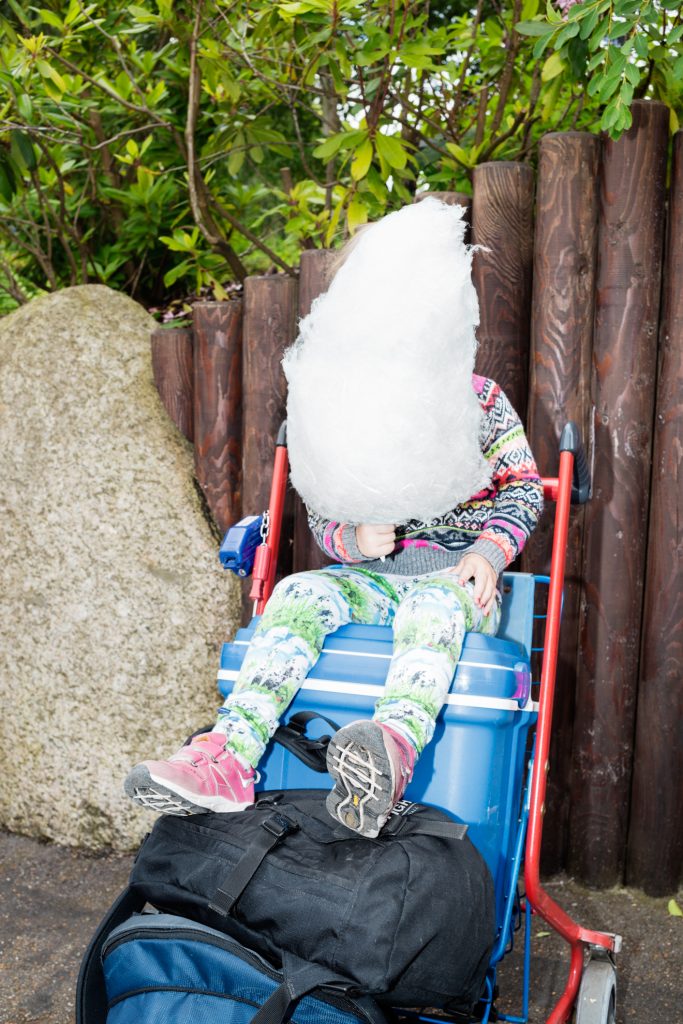by Chiara Ruberti
_
To think that I have always harboured a sort of unspeakable prejudice towards Scandinavia…
Then I chose a husband who would talk about that wonderful year he spent in Aarhus when he studied at Danish School of Media and Journalism at any given occasion. Then I became a mother, and I started to envy that welfare thing, the attention to education, children, the environment, sustainability that I had always considered important but, all in all, well compensated with a dip in the sea of Calignaia, now that that dive is very complicated.
In any case, not even this has managed to convince me that there is really better than here.
As Kristen Bjørnkjær rightly writes at the end of Halfway Mountain, the first book of the Italian photographer Giulia Mangione (Florence, 1987), if it is true that the World Happiness Report commissioned in 2012 by the United Nations crowned Denmark as the happiest country in the world and it counted the Northern countries in the first positions, it is also true that that report “is based on statistics that do not necessarily reflect the state of mind of the Scandinavians who – just look at it through the art they produced, from Munch to Strindberg, to Bergman – is notoriously abysmally dark.” It is a matter of perspective, of “angle”. The same question that Mangione had to ask herself when, for the final project of the DMJX, she decided to concentrate on Denmark in realizing a work project that was then exhibited in various Festivals – I remember seeing it at COTM in 2016, to name one – and which in 2018 came out as a book, published by Journal.
Let’s explore some issues related to this work with her.

How did you start? What are the first images you took?
I took the first good image on the day of Jakob’s First Communion. As soon as I saw it on the camera display, it immediately caught my eye. At the same time, I also knew that it was going to be the only image I would take home from that long day. That image is important because it was the first that had the flavour I was looking for; it also summarizes the whole situation, the tiredness after the church ceremony, the long meal with the relatives. In part, it is also a self-portrait.
I photographed Danish families from 2014 to 2017; the agreement was that I would take part in their ceremonies and their parties, I would photograph them and then hand over some images free of charge, while I would keep others for myself. I knew that the images I was looking for in my project and those that families would frame and hang on the walls of their living rooms would be completely different.
That day I had photographed relentlessly, attracted like a magpie to the glitter of the sequin handbags or to the flashy outfit of one guest or another, without knowing exactly what I was looking for. It was the first time that I’d found myself photographing a ceremony and I was torn between the pleasure of taking pictures for me and the duty to take those for the family. I felt almost schizophrenic, because you really have to be two different people to be able to take both kind of photos.
At the end of a very stressful day, when the lunch was just over and I looked around wondering if it was time to go, a waiter made his entrance carrying a huge tureen! I could not believe my eyes. We had eaten until a minute before, and then, at six in the afternoon, dinner began. I watched Jakob wearily approach the tureen and take a ladleful of broth and potato meatballs and I thought that this was the moment I had waited for a long time, that this was the photo that summed up the mood of the day, mine and his. I had never used a flash in my life and I just hooked it on and set it to automatic. The flash illuminated that scene in an alienating and artificial way, almost like a tabloid or chronicle, and the image had taken on other unconscious meanings. Since then I have never stopped using the flash for this project, using it even when there was no need, even in broad daylight.
In the meantime, thanks to word of mouth from Danish friends and students, I started to receive many invitations to confirmations, communions, weddings and birthdays of octogenarians of complete strangers. And in these situations, I could observe Danish social life. Before being invited to be part of the family celebrations of all these curious and generous families, my photographs had remained on the metaphorical and physical surface of Denmark. I had photographed an impressive number of hedges, but also gardens, furniture, decorations and objects. After the families opened the doors of their houses to me, the images became more specific but at the same time more universal, almost archetypes.

How did you find the angle to look at Denmark and the life of its inhabitants?
I started from the surface of Denmark, because that was my level of intimacy and inclusion with the country. So I photographed what was accessible to me. Then one day a Danish friend suggested that I try to describe the daily life of a family, and she told me about a father, mother and child, who could have been interested in being followed and photographed. I went for a meeting with the family to get to know them. I was nervous, as if it was an interview for a job for which you know you don’t have the right curriculum. To the family, however, it seemed that the situation was much clearer. While I was struggling to describe the type of images I wanted to take and I was trying to explain why, Jon cut short saying: “So it means that you will live with us and photograph us in the morning when we wake up and we have to pretend that you are not there and never look at the camera, right?”
So I started photographing them, trying to capture unusual moments in their daily routine.

In your introduction to the book, you tell that during this project you have not found the answer to the question that many ask you, namely whether the Danes are really the happiest in the world. Rather, this work has given you the opportunity to understand what you deeply like about their culture and their approach to life.
The World Happiness Report polls and the studies of Meik Wiking, author of several books on being Danish and happiness, support the thesis that happiness can be measured mathematically through numerical factors and that it can be studied in the same way depression is studied. Despite having read their studies and theoretically approved their arguments, a part of me continues to think that happiness is too subjective and unstable a factor to be calculated by indices and numbers. When I used the statistics in my book it was a pretext for me to make irony.
As it often happens when travelling, you start looking for something and end up finding something else. And in my case at some point it became unimportant to answer the initial question, to know if the Danes were really the happiest population in the world. What I have learned are many small things, such as the fact that the Danes use cemeteries to picnic, tan, to celebrate life, more than death. Or for example, they go to højskole (a kind of pre-university school) not to get good grades, but to learn what they are good at in life and what makes them happy. And also that they have a certain innate sense of freedom in becoming what they want to be.
In 2017, Queen Margrethe, in her New Year speech, said: “Try to do something that is not necessary, something useless and meaningless. I think it is important to have experiences that serve to develop our senses, inspire our imagination, stimulate the mind and enlarge our world. After all, it is not so useless.” This sentence summarizes in itself the spirit of my journey through Denmark.

The title of the book. I know you changed it several times before arriving at this “Halfway Mountain”. I find it a courageous choice, because it does not refer directly to the subject of your research. Only when you have a book in hand and read the quote from Aksel Sandemose’s novel can you understand that, once again, what you wanted to do is to underline the choice of your angle.
I started my work in 2014 when I was attending the Danish School of Media and Journalism in Aarhus. In the summer of 2016, I decided to return to Denmark to finish the job or at least to continue shooting. In that summer, in the library of Nykøbing Mors I found the only copy in English of A fugitive crosses his tracks (1933), a fiction novel with autobiographical ideas, very important for Scandinavian culture. It is here that its author, Aksel Sandemose, invented the concept of “Jante’s law”, a law that everyone in Scandinavia knows, consisting of ten articles that repeat, with some variation, that no one should think of being different or superior to the other.
The title is taken from the book’s epilogue, which describes Halfway Mountain, a mountain located in the Canadian province of Newfoundland and Labrador, the land where Leif Erikson arrived when he discovered America before Christopher Columbus. The author reflects on how this mountain takes on a different aspect based on the perspective from which it is observed, but that every description of it can be considered equally true. For this reason, Halfway Mountain has become for me the perfect metaphor to describe something as subjective and perpetually changeable as happiness.
All images: © Giulia Mangione
July 9, 2020




